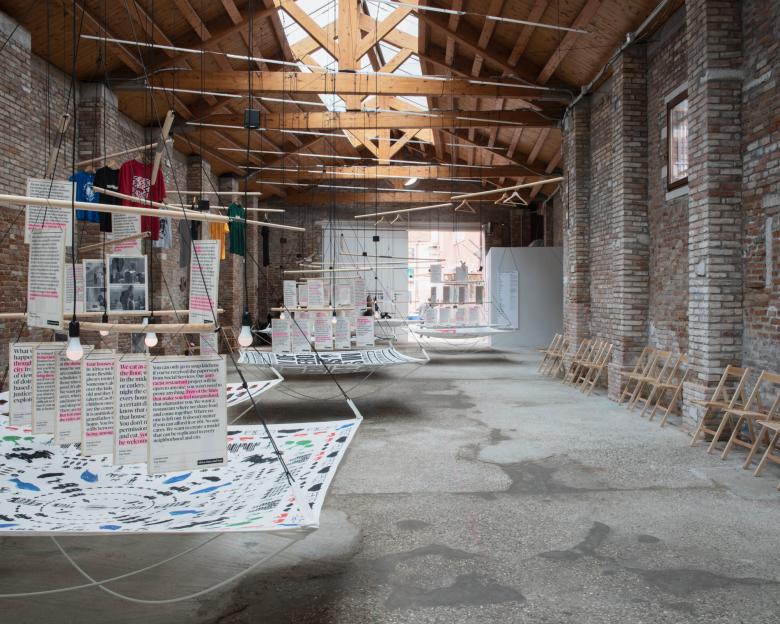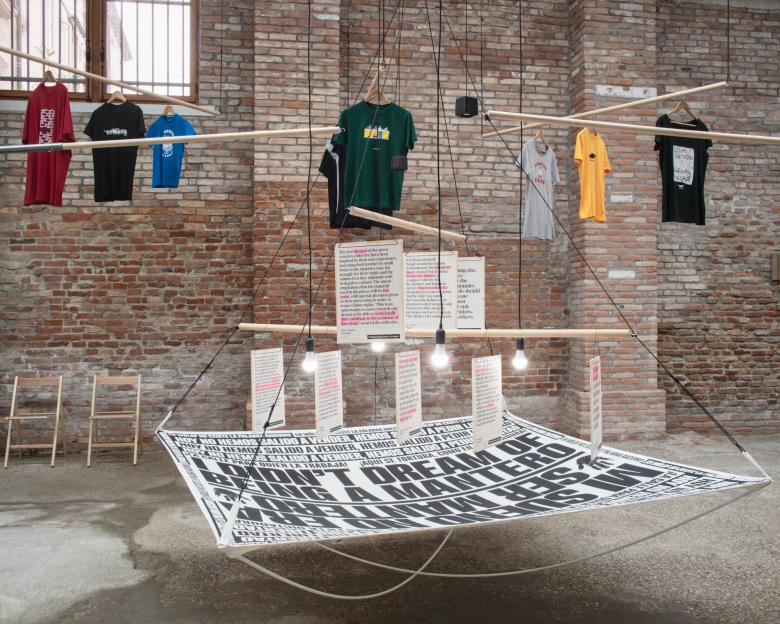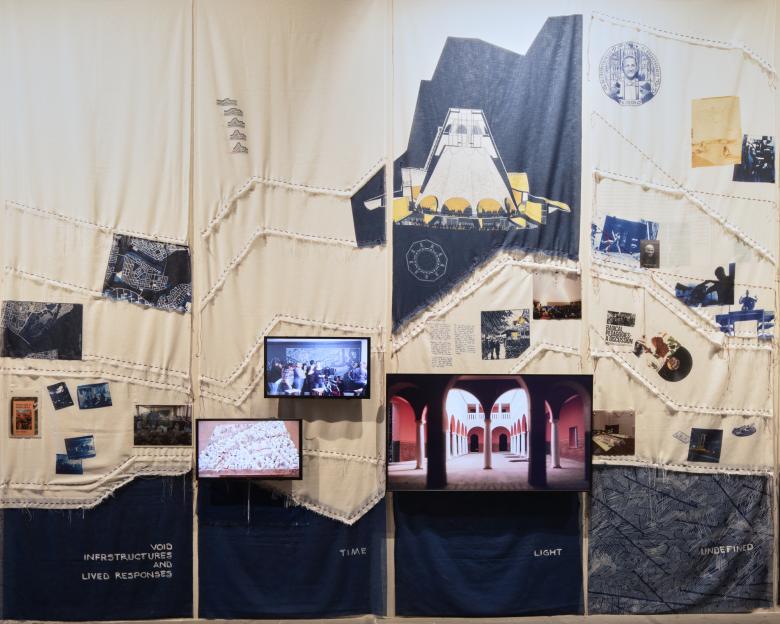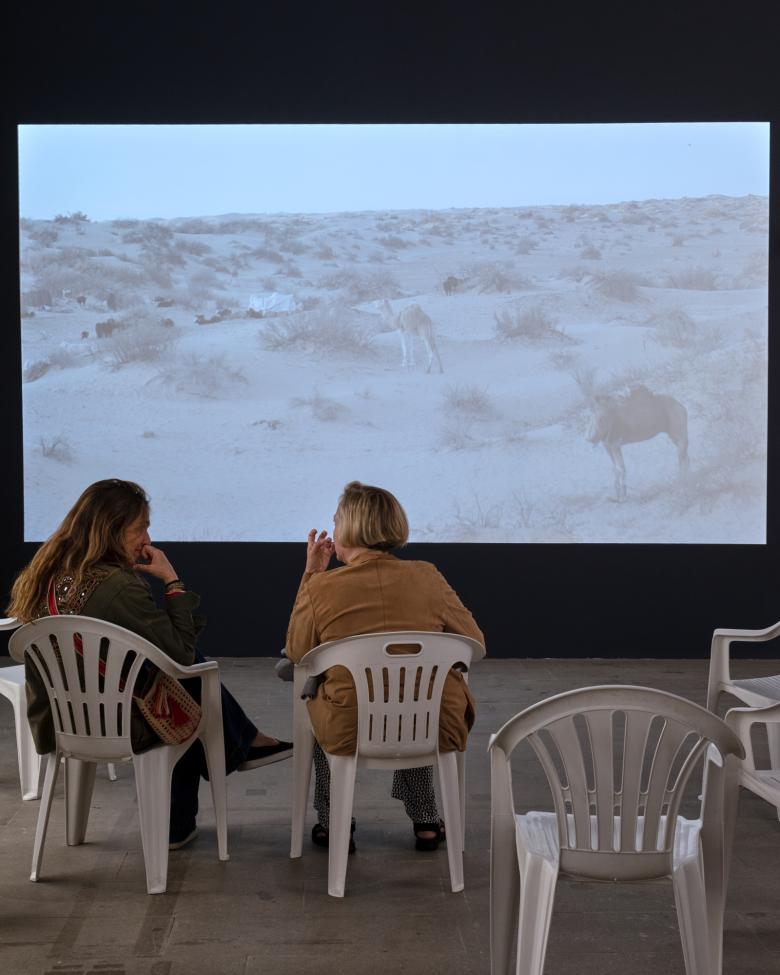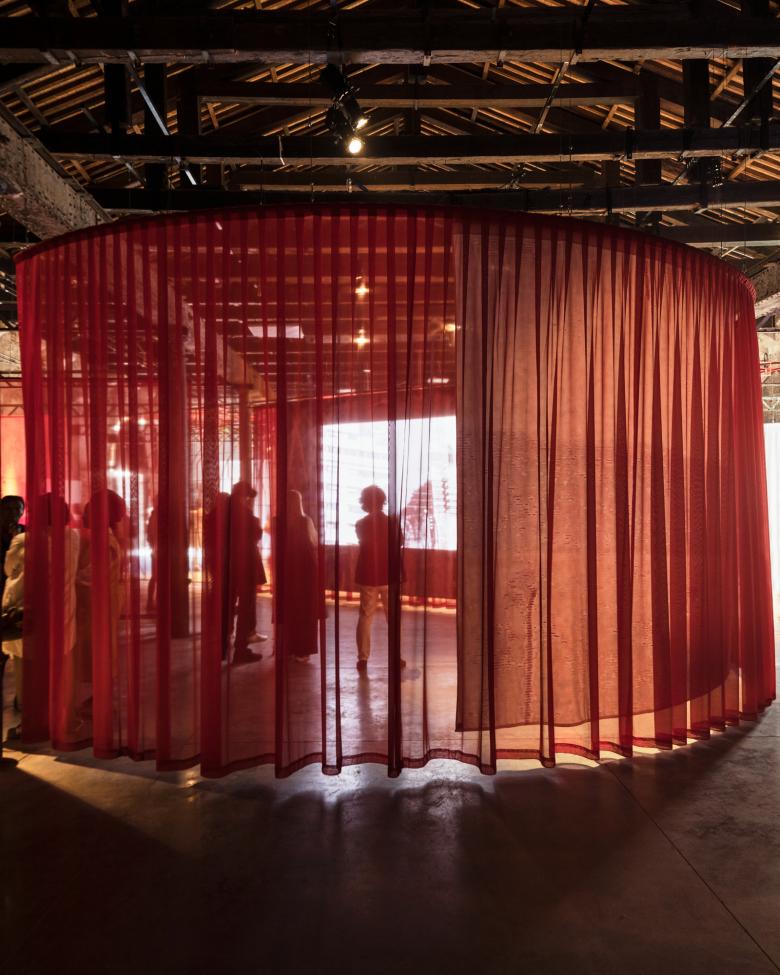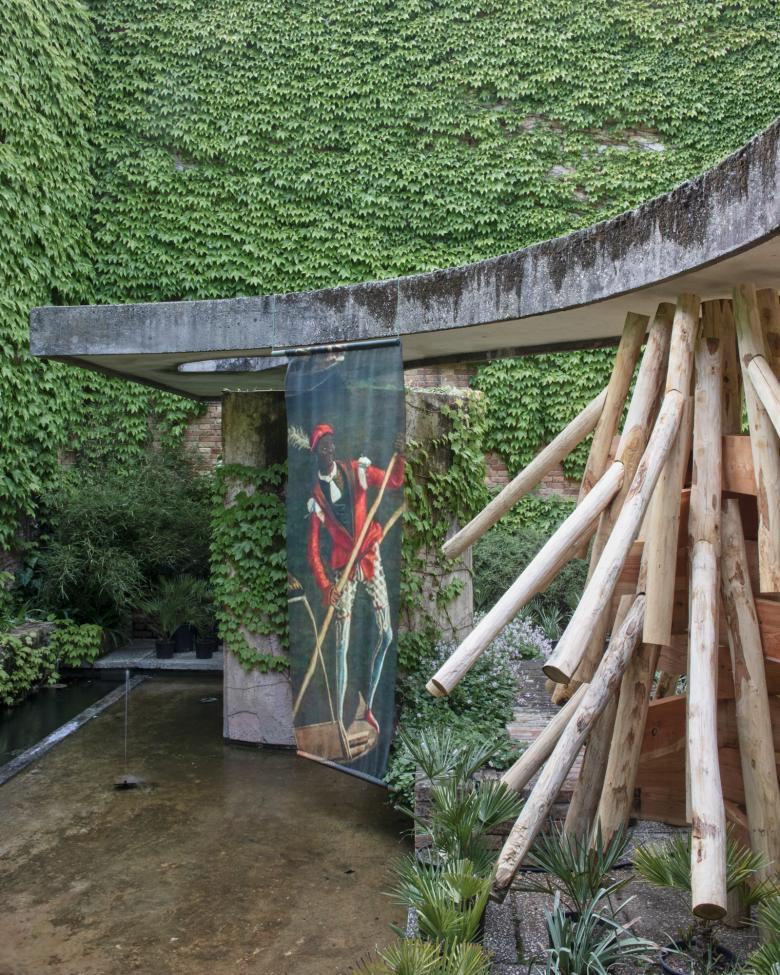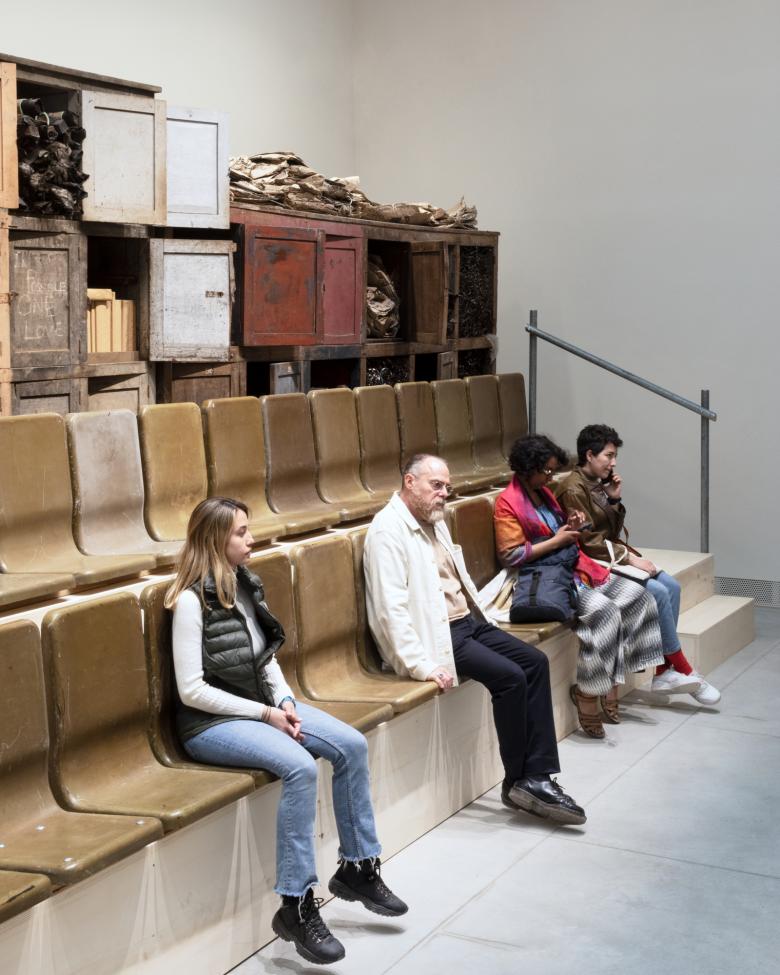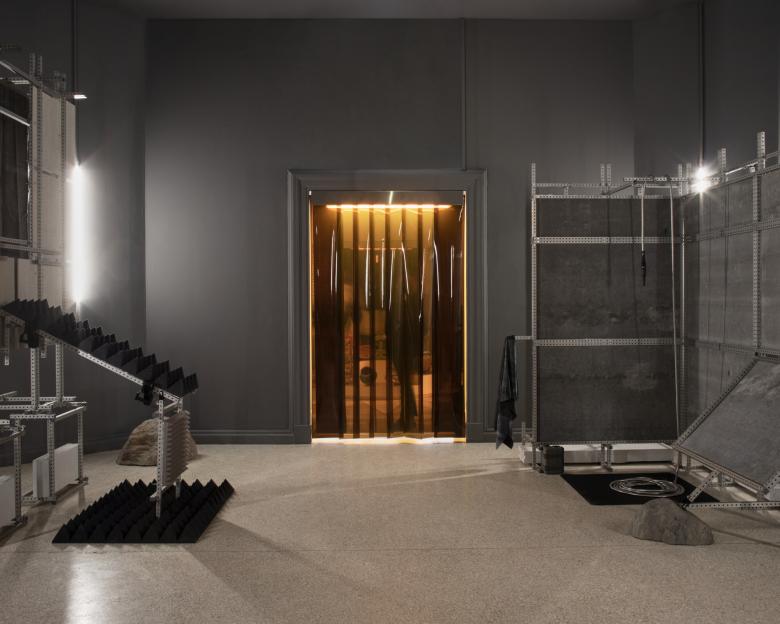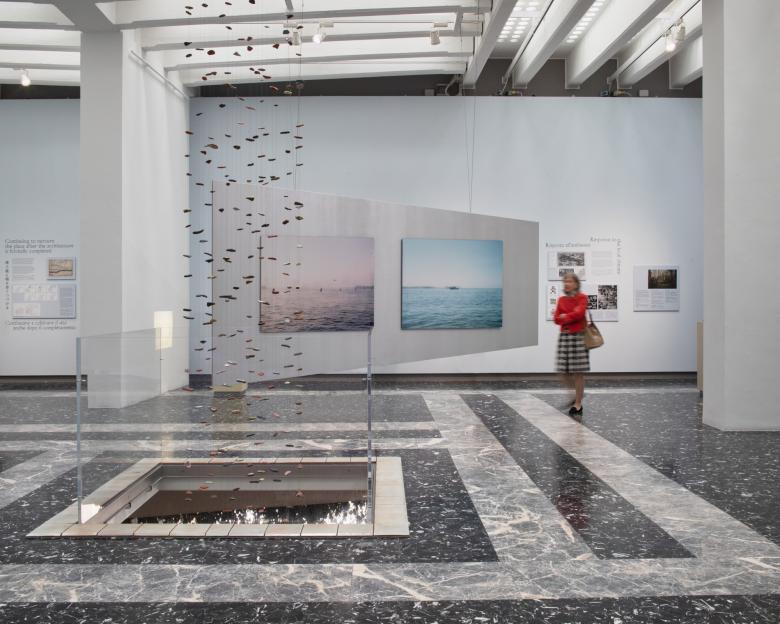29. de juny 2023
Photo © Flavia Rossi
As part of the World-Architects team that visited Venice for the vernissage in May, Italian photographer Flavia Rossi put the 2023 Venice Architecture Biennale in the pictures. Her photos give an impression of the diverse interpretations of curator Lesley Lokko's theme The Laboratory of the Future.
The Catalan contribution (this photo and photo at top) interpreted Lesley Lokko's Biennale theme and took on an important topic: African migration in Europe and the reality of working people. Leve, the curators of Following the Fish, teamed up with Top Manta, the association of street vendors in Barcelona founded in 2017. The organization is an example of the many "Africas" being built in the cities and rural areas of Europe by the African diaspora. (Photo © Flavia Rossi)
Tectonic Shift, a textile installation by Wolff Architects on display in the Arsenale, was honored with a special mention. In it, architectural drawings were applied by means of cyanotype, a technique that requires only solar energy. In this way, the transdisciplinary office drew attention to the low access to electricity in Africa. (Photo © Flavia Rossi)
Part of the “Dangerous Liaisons” section of the exhibition in the Arsenale were two Swiss contributions. In addition to a film by Ursula Biemann, the installation Welcome in Nomadland by Le laboratoire d'architecture, based on recent research by the office, was also on view. The French-speaking Swiss team curated the Swiss Pavilion at the previous Architecture Biennale. (Photo © Flavia Rossi)
In "Gender & Geography," one of Lokko's special projects located at the end of the Arsenale, Ines Weizman followed in the footsteps of African-American dancer Josephine Baker. (Photo © Flavia Rossi)
Among the sixteen contributions to the “Force Majeure” section of the exhibition in the Central Pavilion was the installation Native(s) Lifeways by Hood Design Studio. It questions the word "native" and proposes an alternative vocabulary to think critically about new hybrid formations of native and foreign landscapes. (Photo © Flavia Rossi)
Ghanaian artist Ibrahim Mahama showed an adaptation of his work Parliament of Ghosts in the Central Pavilion. It prompts visitors to consider some of the questions that Lokko's Biennale asks: How can we recover memories to which access was denied? How do we excavate the past to create new futures? (Photo © Flavia Rossi)
Among the standout national pavilions in the Giardini is the American entry, Everlasting Plastics. Petrochemical polymers known as plastics were developed in the United States as a revolutionary material. Today, it is clear that we urgently need a new approach to the excessive plastic waste in our waters, landfills, and streets worldwide. (Photo © Flavia Rossi)
The Japanese Pavilion, Architecture, a place to be loved — when architecture is seen as a living creature, proposed to read architecture as a living being and not as an entity separated from nature. The lower part of the pavilion mutated into a workshop where visitors could produce their own work on the back of a manifesto. Creating something yourself is like giving life, the sheet says, and visitors could take the creation home or leave it there as part of the exhibition. (Photo © Flavia Rossi)
The multimedia installation in the Japanese Pavilion, completed 67 years ago, demonstrated that architecture is a complex discipline. (Photo © Flavia Rossi)
The article was first published as “Die Architekturbiennale in Bildern” on Swiss-Architects. English translation edited by John Hill.
Articles relacionats
-
Watching the Biennale
14/11/23
-
Amazonia in Venezia
6/7/23
-
The Biennale in Pictures
29/6/23
-
From Barcelona to Venice
23/6/23
